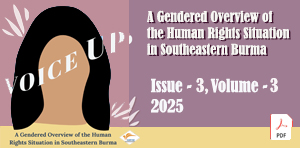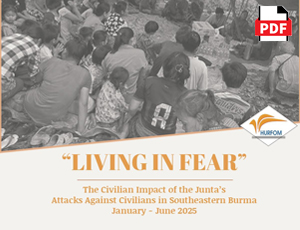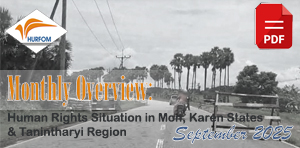Mon and Karen populations worry as census looms
December 17, 2013
HURFOM field reporters visited communities in Mon and Karen States two weeks ago to collect local opinions about the upcoming nationwide population census. Conversations revealed that many residents were either concerned or not informed about the census, and several people declined to comment because they said they were hesitant to discuss a government plan that they did not understand. The government and international donors, led by the United Nations Population Fund (UNFPA), are coordinating the census planned to begin on March 30, 2014.
A member of a Karen armed group in Kyainnseikyi Township described his concerns about the potential for misuse of information collected during the census.
“Their questions cover not only populace, social, and economic information but also land territory data that could be used for military strategy in the future. Those of us from armed groups worry a lot about our security. I believe that [the purpose of a] census is to collect information like how many people there are, where they live, what their sex is, and how many elderly people there are. In addition a census could cover where people are born and how they live, but that’s all I think. However, [the government’s] plan this time is to collect all [kinds of] data.”
Two years ago government order No. 59/2011 established the Central Census Commission and Committee now chaired by Minister U Khin Ye from the Ministry of Immigration and Population and vice-chaired by members of union ministries like the Ministry of Home Affairs and the Ministry of Agriculture and Irrigation. Supervising committee groups have also been organized in states, districts, townships, and villages across the country, and an enormous 100,000-person team of trained enumerators will perform the census taking.
According to one local teacher linked to a government department, “It is said that the government will use teachers and volunteers [to secure] human resources of about 100,000 people nationwide [to implement the census]. The main people they will ask are male and female teachers from primary schools. They will train the teachers to ask [the census’] 41 questions. What I’m worried about is that ethnic people’s populations may [appear] less than before. [The census form filled out by the teachers] has 41 answer boxes for 41 questions that are very complex. There will be a code to put in the boxes instead of words. We need to consider whether the teachers [will be] able to learn all the complicated questions correctly in a short time. We need to think about whether [the teachers] can complete and accurately fill in all the boxes. We, ethnic people, need to carefully monitor whether a person manipulates the answers. For instance, if the question is, “What’s your ethnicity,” the [census takers] are not allowed to write Mon or Karen or Shan in words but in code. So it could be possible that teachers put the wrong code sometimes or do it deliberately. When [later] entering the data into the computer, the responsible people could easily change the code. These are very worrying issues for ethnic people. Ethnic populations are already small and if the data is corrupted, ethnic people will suffer a lot.”



















































